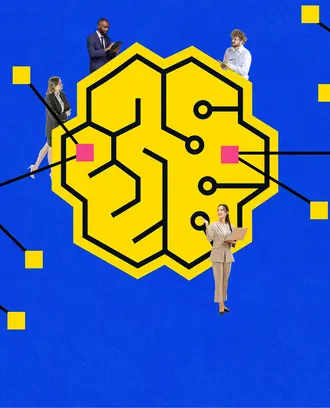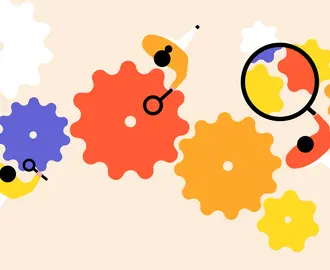Despite all the advances in technology designed to streamline work, output per hour has actually been leveling off since around 2006. While some believe that’s the new normal for productivity, new research from MIT Sloan economist Erik Brynjolfsson and his colleagues shows it may just be a temporary lull.
The researchers developed a model to account for the presence of unmeasured intangible investments in a firm, which can signal the benefits of an emerging general purpose technology that don’t show up in other metrics. They studied the effect in the context of artificial intelligence, an emerging technology that many believe will carry big implications for productivity.
Measuring gains in productivity due to general purpose technologies, or GPTs, like AI is difficult because much of it is reflected at first in those intangible investments: things like developing new processes or learning new skills. “This is one of the great puzzles of our era: amazing technologies, but so far, slow productivity growth. I sometimes call it the AI productivity paradox,” Brynjolfsson said.
The tangible benefits of the GPTs are only seen later, as those intangibles begin to generate measurable outputs, the research shows. The period in between can cover a significant amount of time, and attempts to measure it form a j-shaped curve.
Brynjolfsson and his colleagues published their findings in a recent paper with the National Bureau of Economic Research, entitled “The Productivity J-Curve: How Intangibles Complement General Purpose Technologies.”
“Initially, GPTs can lead to lower measured productivity growth. The good news: It later rebounds when those intangible investments start paying off, generating output that we can consume and measure. In short, the productivity looks like a ‘J.’ First it falls, or is lower than trend, and then it rises. It's the productivity J-curve,” Brynjolfsson said. “We think AI may be in the early part of the J-curve now.”
It took up to three decades to see the effects of electrification in factories in the statistics.
A similar effect has been seen with past general purpose technologies like electricity, which led to the complete redesign of factories, according to Brynjolfsson and his colleagues, MIT Sloan PhD candidate Daniel Rock and Chad Syverson of the University of Chicago. But it took two or three decades to start seeing the effects of that redesign in the productivity numbers.
The authors argue trillions of dollars of intangible output has been produced in this way, but not counted in national income accounts or realized in improvements to consumer products or technology.
“The extensive investment required to integrate GPTs into an organization is often forgotten,” the study reads. “Along with installing more easily measured items like physical equipment and structures capital, firms must create new business processes, develop managerial experience, train workers, patch software, and build other intangibles.”
Brynjolfsson added: “Billions are spent on creating self-driving cars but as far as I know, there's not one driverless truck in regular operation — yet.”



